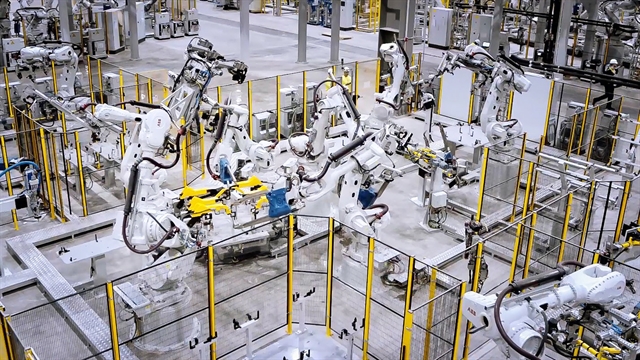With production and supply chain disruptions caused by the COVID-19 pandemic, producers and consumers have to find ways to adapt.

With production and supply chain disruptions caused by the COVID-19 pandemic, producers and consumers have to find ways to adapt.
One method is increasing the use of high technology and AI (Artificial Intelligence).
Ho Minh Duc, CEO of VBee, a Vietnamese tech company providing AI text-to-speech services, said that the pandemic is providing impetus for companies and customers to change their mindset towards the application of technology.
With continuing difficulties caused by COVID-19, especially the ongoing fourth wave of infections, manufacturing industries are also facing a shortage of workers due to movement restrictions and social distancing measures.
This provides a chance to promote the use of technology and AI systems in mass production to cut costs and increase efficiency.
Wang Yu, a research fellow at the College of Intelligence and Computing, Tianjin University, said COVID-19 posed both threats and opportunities to manufacturing industries.
“As all sectors, including manufacturing companies, have suffered huge losses from the pandemic, they realise the importance of AI and intelligent manufacturing,” Wang said during “The Future of AI in Manufacturing Industries” webinar, recently held by the China Daily, China's Tianjin Municipal People's Government Information Office and Asia News Network.
A survey conducted by Wang’s team on more than 470 manufacturing enterprises in Tianjin, China, in 2020 showed that companies are paying more attention to advanced manufacturing with 45 per cent of them planning to apply tech in production, while 65 per cent already did.
In Viet Nam, many industrial zones like those in Bac Giang Province have become COVID-19 hotspots during the latest outbreak. According to the People’s Committee of Bac Giang Province, the pandemic has caused a daily loss of VND2 trillion (US$86.8 million) and forced more than 140,000 workers to stop working.
When workers can’t come to factories, the production process is disrupted, as Viet Nam’s manufacturing industries are still labour-intensive, affecting the economy as a whole.
Phan Thi Thanh Xuan, General Secretary of Viet Nam Leather, Footwear and Handbag Association (Lefaso), said that restructuring is necessary for businesses during this tough period if they want to survive. Technology is one solution to reduce the dependence on workers.
“Despite rising orders, the industry still faces many difficulties from higher material prices to a scarcity of workers,” Xuan said.
“Companies will come up with restructuring plans, including the application of technology, to reduce the number of workers in factories, and to increase production capacity and efficiency.”
In order to not create issues for labourers when they return to factories, technology should be applied to processes which do not require a lot of workers, Xuan added.
During the webinar, Neale G. O'Connor, professor and head of the Department of Accounting, Monash University Malaysia, said that intelligent manufacturing will also help with fault detection, quality control and attention to detail.
Not an easy task
However, in Viet Nam, technology and AI are currently used mostly in the finance and banking industry, as well as healthcare and agricultural sector, said Duc. "Rarely do we have technology companies making AI products for manufacturing industries," Duc added.
“It will be a challenge for both technology firms and manufacturing enterprises."
Corporate culture is a crucial factor. If a company’s leader and every employee are willing to take risks and make changes, they will be ready for AI. When there is demand, supply will surge.
In Viet Nam, not many tech start-ups aim for industrial zones, therefore supply sources for the field are limited, Duc said.
“If it is about payment or logistics solutions, tech start-ups will jump in,” Duc said.
“But when it comes to production lines, they hesitate because they are short of knowledge, while it is difficult to approach manufacturing enterprises, especially ones with self-contained production lines.”
“We received orders from some producers for security cameras with fire alarms, environmental sensors, and automatic lighting systems to cut costs, but they are just small links in a chain.”
Moreover using tech may consume a large amount of capital which normally only big companies are willing to invest, while small and medium sized enterprises (SMEs) are reluctant to participate. The number of SMEs accounts for roughly 97 per cent of the country’s total companies.
Companies also have to send their workers to training sessions to operate new systems and need to invite experts to assist and guide them in using the technology.
AI requires big data to gain expected results and enterprises have to ensure the quality of input information. Data processing, which requires extensive intervention for AI projects, also needs a highly qualified IT workforce. That is another challenge for Vietnamese companies.
"The work force for the IT industry has always been scarce in Viet Nam, especially for new technology and AI," Duc said.
"Thus, training centres and schools need to cooperate to build an ecosystem for new technology and encourage young people to join this tough industry." — VNS





